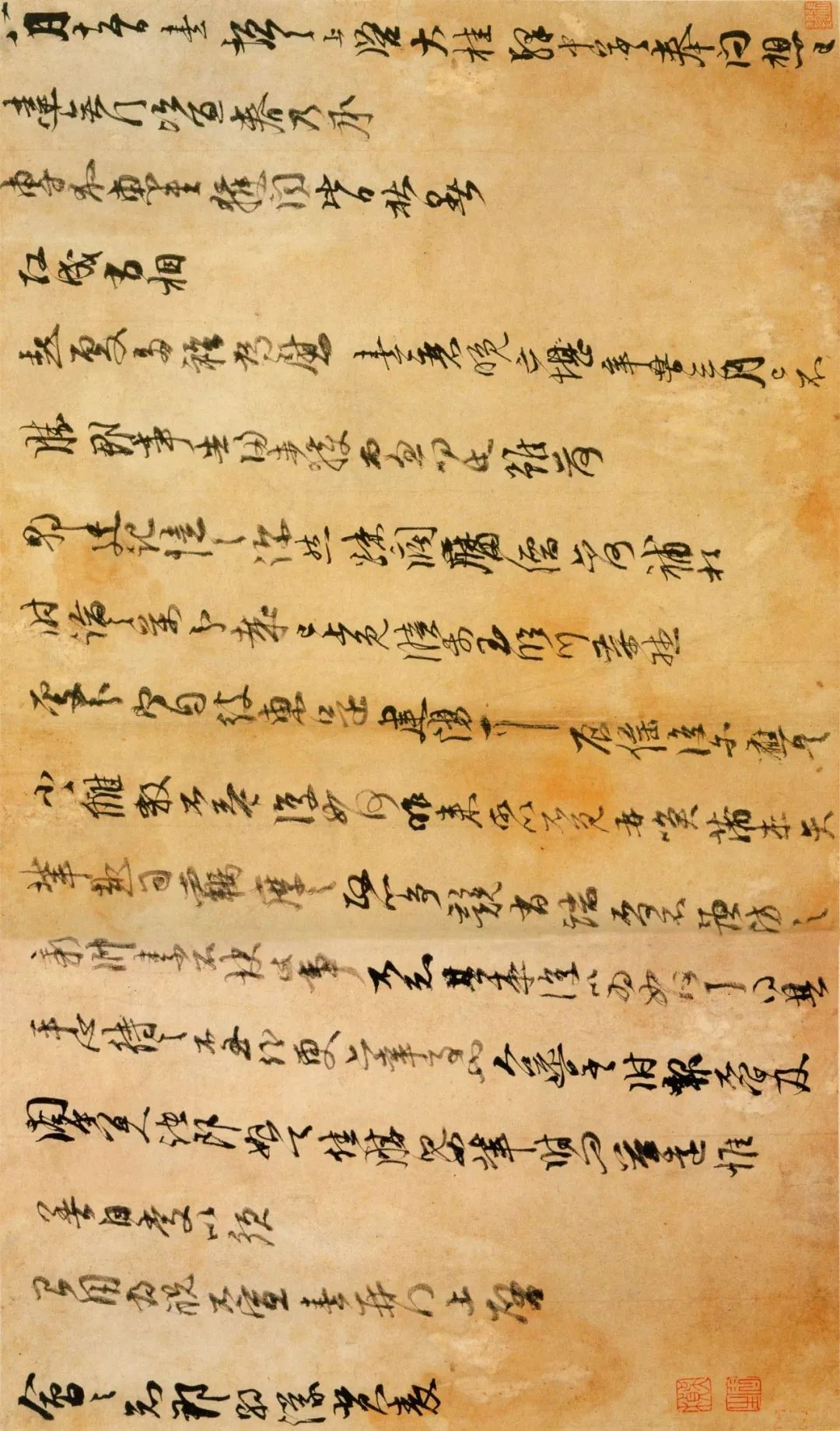
The “Great Gui Post Station” by Zhu Xi
This paper, a vertical scroll with dimensions of 33.4cm in height and 57.3cm in width, showcases the running script consisting of 17 lines and 240 characters. It is housed in the Palace Museum in Beijing.
This piece is a page from the “Essays of Eminent Song Scholars,” featuring social engagements. It records Zhu Xi’s request to return to his fields, his plan to visit the Kao Pavilion, and his summoning of a skilled archer. According to Zhu Xi’s “Chronology,” he served as the magistrate of Tanzhou in the fifth year of the Shaohxi era of the Song Dynasty. The “Annals of Ning Zong” states, “In the seventh month of the year, summoned the secretariat compiler Zhu Xi, who knows Tanzhou, to come to the imperial court.” The line “After three months of toil, I am unable to cope with the county affairs” refers to his term from May to August, which spanned exactly three months. The phrase “unsuccessful in my request to return” indicates Zhu Xi’s plea for leave to return to his fields in June.
With many references to events from the fifth year of the Shaohxi era, it can be deduced that this piece was created in the same year, when Zhu Xi was 65 years old. The calligraphy in the “Great Gui Post Station” is free-spirited and unconstrained, exuding a natural antiquity and a captivating charm, akin to the swirling of clouds and the wind. Its focus lies in the expression of the text, displaying an inherent sense of enjoyment. As Zhang Jingfeng remarked, “It is not only the name of the calligrapher but also the mastery of learning that conceals it.”
Appreciation of Details






Tags: Calligraphy, Artwork, Chinese History, Song Dynasty, Palace Museum, Beijing, Running Script, Cultural Heritage, Zhu Xi